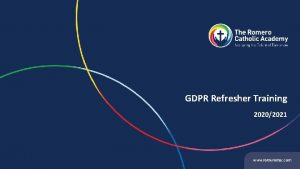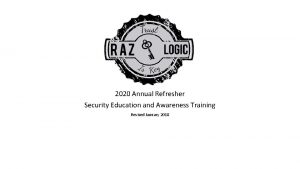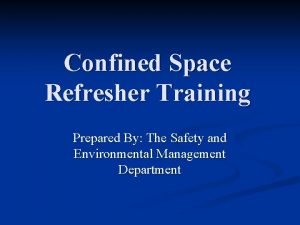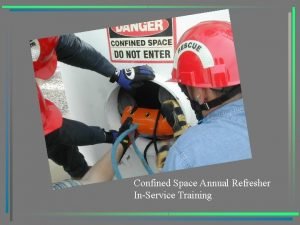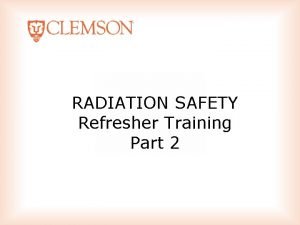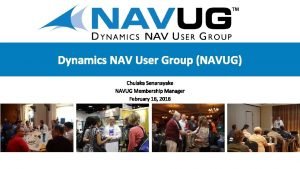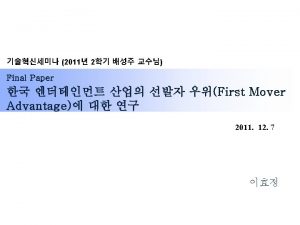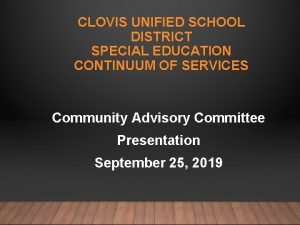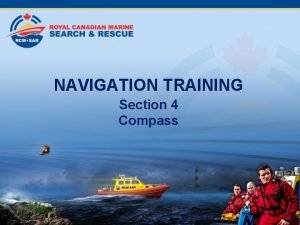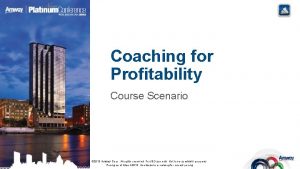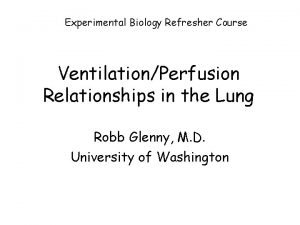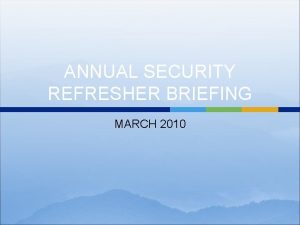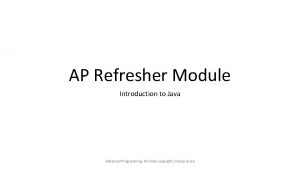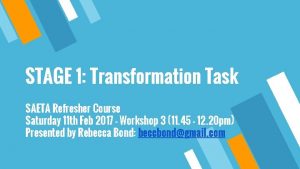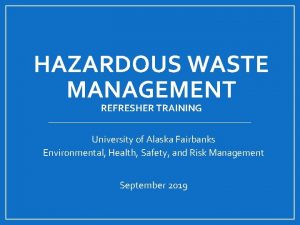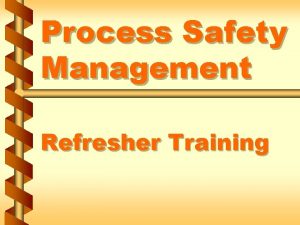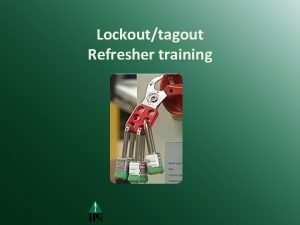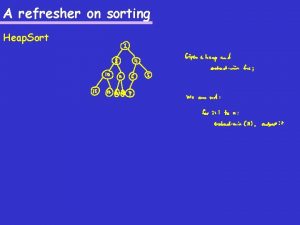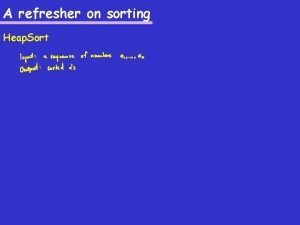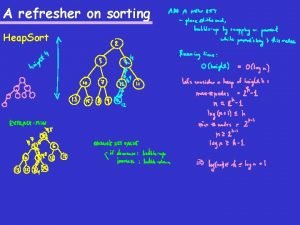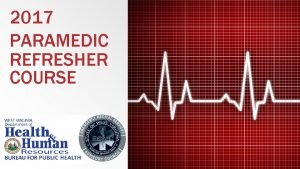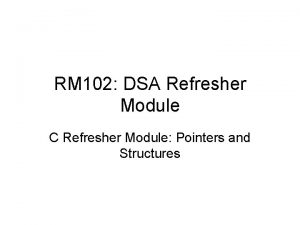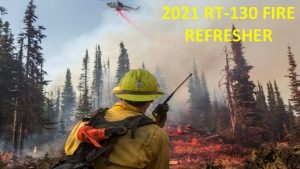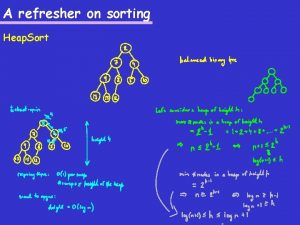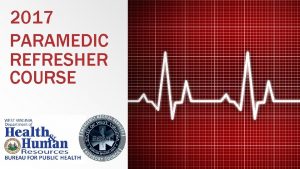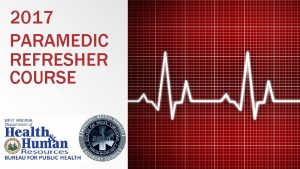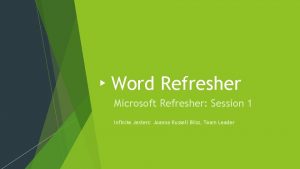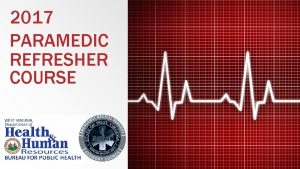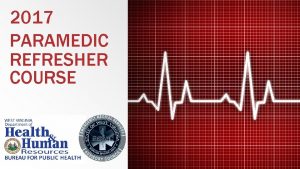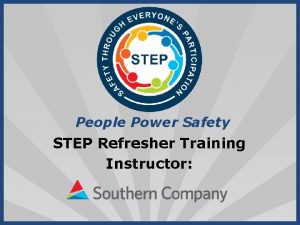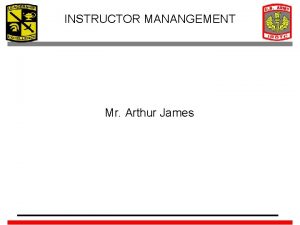INSTRUCTOR REFRESHER TRAINING FTSC 2013 Contents Review new













![7 Practice Takeoff and Tow/Winch launch [Medium Turns – 4] Turns; Lookout, Straight Flight; 7 Practice Takeoff and Tow/Winch launch [Medium Turns – 4] Turns; Lookout, Straight Flight;](https://slidetodoc.com/presentation_image_h2/1134475bba6082c80fdb90759156099b/image-14.jpg)























- Slides: 37

INSTRUCTOR REFRESHER TRAINING FTSC 2013

Contents • Review new PTR & rating Code • New stages/exercises and rationale – Teaching techniques – Tips for some stages • Notes for: – – Preparatory ground briefing Pre flight briefing Post flight briefing HF integration • Video clips examples of Demos • See speaker notes for more detail

Student Pilot Training Record 1 July 30 L-13 PPY Instructor’s name : 35 1 1

Record Pages

Performance Codes 1 - Prep ground instruction or demo/took over control for safety 2 - Physical assistance on controls 3 - Verbal assistance only 4 – No assistance & non critical errors 5 – No assistance & only minor errors/ready for solo

PTR - Exercise Stages 3 3 3 12 4 4 5 12 12 4 4 5 4 4 4 5 3 3 3 4 5 4 2 5

Remarks Pages May 10 May 24 1 st time in turbulent conditions at 300’ got high& slack rope instructor had to take control, debriefed that corrective action required sooner to prevent tow plane upset Jones 229634 Turbulent day on tow and had no problem recovering slack rope Jones 229634

Instructor Comments “Musts” • • • Reduced “g” sensitivity Anxieties/fears Other HF observations IMSAFE factors Any safety related issues – alerting for next instructor – follow up action required

Instructor Comments “Should” • • Review exercises required Training difficulties Recommended exercises Skills mastered Periodic reviews/major stages Specific conditions Special authorizations

Example Comments • Pilot is sensitive to low “g”. Gradually introduce situations/sensations before lesson on low g tolerance in stall • Having difficulty with co-ord of controls. Suggest linked turns and turning on point exercises on next flight • Experiencing difficulty with directional control on runway for take off. When using rudder, input is too long and/or not compensating with aileron to control role axis • Bounced landing, tried to plant wheel on ground, then opened air brakes fully by mistake. Practice technique at altitude before next landing • Completed rope break series of exercises 500’/50’/300’ without difficulty

Lesson Planning Factors • • • Weather Human Factors Students ability Instructor’s ability Planned tow height Thermal conditions Time of day Preparatory ground instruction completed Number of students

HF for lesson planning • • I AM SAFE Workload Subject material Student prepared Instructor busy Equipment Conditions

Stages/Skills in PTR RECOMMENDED SEQUENCE FOR TRAINING PROGRAM TO FIRST SOLO Stage # Skills to be Taught and Practiced Prerequisites Famil. Instructor introduces CISTRSC-O, LOOKOUT and local area landmarks. 1 Demo Interior and Exterior Inspections; Demo CISTRSC-O and LOOKOUT; Primary Effects of Controls: Elevator, then Ailerons (and Rudder) to perform Gentle Turns entry and exit; Control of Speed 2 Aileron Drag; Continuous Turns; demo SOAR technique 3 Stability; primary Effect of Rudder; The Trim; SOAR Continuous Turns; Demo SWAFTS (including radio call) 4 Reduced-g; Slow Flying; 1 g Stalls; Turning onto a Heading; SOAR, SWAFTS. 5 Medium Turns [Effects of Controls & Turn Coordination – 3] Thermalling Technique and Protocols; Straight Flight (towards a point on horizon) 6 Demo Takeoff and Demo Aerotow/Winch Launch Effects of Airbrakes at height [Medium Turns – 3] [Speed Control – 3 & Straight Flight – 3] Approach Control using Airbrakes and [Effects of Airbrakes – 3] Overshooting and Undershooting; Demo Landing
![7 Practice Takeoff and TowWinch launch Medium Turns 4 Turns Lookout Straight Flight 7 Practice Takeoff and Tow/Winch launch [Medium Turns – 4] Turns; Lookout, Straight Flight;](https://slidetodoc.com/presentation_image_h2/1134475bba6082c80fdb90759156099b/image-14.jpg)
7 Practice Takeoff and Tow/Winch launch [Medium Turns – 4] Turns; Lookout, Straight Flight; Stalls; etc. Approach and Landing (from high Final Turn) Thermalling*; [Medium Turns – 4; Effects of Airbrakes – 3] [Overshooting & Undershooting – 3] 8 Steep Turns & Advanced Thermalling* Demo Circuit Planning [Approach and Landing – 3] Practice Approach and Landing 9 Steep Turns, Thermalling* [Medium Turns – 4] Demo and Practice Collision Avoidance Flying the Circuit (normal Final Turn Height); Use of Radio 10 11 Spiral Dives and Benign Spiral* [Steep Turns – 3] Zigzag in Downwind exercise [Circuit Planning – 3] Boxing the Slipstream; Low Tow; High Tow [Aerotow – 3] Further Stalling exercises (Climbing, Descending and in a Turn) 12 Rope/Cable Break Recovery Technique at altitude Effect of Angle of Bank on Stall Speed 15 [1 g stalls – 3] [Further Stalling – 3] Slack Rope on Aerotow; Rope/Cable Break Recovery practice at altitude Sideslipping at altitude exercises Abbreviated Circuit [Circuit Planning – 4]

14 Towplane Upsets & Emergency Aerotow Procedures X-Wind Takeoff; Laying Off for Drift on Winch Sideslipping & Sideslip on Approach [Sideslipping – 3] Illusions created by Drift; X-Wind Landing 15 Descending on Tow* [Aerotow – 4] Spins and Comparison to Spiral Dive [Spiral Dives – 3] Airbrakes fully open before Circuit exercise 16 Further Spinning exercises*; Changing Effect of the Rudder at the Stall; Spin Left off a Right Turn, etc. 17 [Circuit Planning – 4] [Spins – 3] Spins Avoidance Practice (recover before spin develops)* Instruments covered exercise*; Right-hand Circuit exercise 18 Rope Break demo at 500+ feet agl Abbreviated Circuit [Rope/Cable Break Recoveries – 4] [Abbreviated circuits – 3] 19 Off-field Field Selection and Circuit Planning* 20 Rope/Cable Breaks flights (demo first at lift-off, at low height, at medium height (300 feet agl), then student practice with full briefing before each flight) [Rope Break demo at 500 ft – 1] 21 Review and Practice all maneuvers and skills 22 First Solo flight 23 Post-Solo: [dual flight after every 4 flights max. ] Review basic maneuvers, [All identified exercises and skills – 5] upper air work, incl. descending on tow, Slipping Turn onto Final, etc.

24 Upper air work – review of flight test elements, post-basic training exercises – see p B 18 -1 25 Upper air work – review spins and spin avoidance, slips, etc. , advanced thermalling, etc. , off-field and circuit selection 26 Flight test review and recommendation [All exercises and skills – 5] Note: Exercises marked * may be postponed to the post-solo stages. If pre-solo training was compressed the dual flights should be more frequent after solo to cover all the missed exercises before licensing.

Instructing Notes • Teach lookout on 1 st lesson while on tow • First few flights demonstrate circuit correctly “Duplicable” • Do not attempt to teach take off, aero tow or landing too early • Do not let student attempt un coordinated flight in early lessons • Approach speed rational (1. 3 x Vs + Vw) • Pre landing checks before high key preferred • Aero tow - demo dutch role and how to correct • Optional Zig. Zag circuit is instructor flying student judging

More Instructing Notes • Preparatory ground instruction • When teaching planning circuit instructor flies not student • Angle of Bank vs Stall speed is instructor demo only • Teach off field landing planning before 1 st solo • No climbing turn off tow • Instructor taking control too late vs interfering on controls. Rotation ½ airbrakes to 2/3 depending on aircraft • Teach landing, then approach control, then circuit planning (rationale) • Landings • Teach rope break above circuit height, 500’, 50’, then 300’ last (rationale)

More Instructing Notes • Teach stall recovery from slow flight first from an indication not the full stall • Teach wing drop stall recovery before spin recovery • Spin recovery technique • Further stalls and spins • Integrate HF into each lesson plan • Post solo requirements (4 solo follow with dual) • Signing of log sheets for lessons (FTU) • Acute stress • Scenario Based Training

Preparatory Ground instruction • Ref CAR 405. 31(b) • Not Ground school • Training Aides & Use of Video – Instructor delivered is preferred – Can replace on one instruction at flight line – Student review following flight • Background information to any lesson items – Include other training that is relevant to lesson • Best given by instructor just before flight with 48 hrs

Preflight Briefing • Ref CAR 405. 31(a) • Brief overview of what will be demonstrated/taught • Deliberately include any HF aspect of flight • Include any safety points for lesson • Max duration of a minute or two

Post Flight Briefing • Ref TC Flight Instructor Guide TP 975 • Ask the student how the flight went • Bring up any HF lessons learned especially airmanship points • Keep critique to 2 -3 of major points only • Identify what the student did right • Suggest what they should work on next

Some HF knowledge/practical examples for Flights • Vision limitation/Scan techniques & illusions in flight (myopia, drift) • Decision making models/Use in flight (SOAR, PAVE/CARE/TEAM, WROLL, SSSLOW, IAMSAFE, CALL) • Physiology/Disorientation (Coriolis effect, spatial disorientation, G, air sickness) • Physiology/Effects on flight (fatigue, hypoglycemia, dehydration, hypoxia, temperature, barotitis, barosinusitis, bends) • Communication errors/CR M • Personality factors/Effect on flight (attitude, attention to detail, self discipline, responsibility, self evaluation, stress, fear) • Control design/Errors made in flight (spoilers, gear, instruments, primary controls, body& seat position, radio, compass) • Checklists/Checklist error(s) made in flight

PDM & Risk Assessment Tools • Situation (perceive) – PAVE – Ask yourself: what has happened? what is happening now? what will happen next? • • Pilot Aircraft en. Vironment External Pressure • Options (process) – CARE • • Consequences Alternatives Reality External factors

PDM continued • Action (perform) – TEAM • • Transfer Eliminate Accept Mitigate SPRM • Re-assess – Regain SA (3 questions & PAVE? ) – Has anything changed? – If yes repeat Options, Action Re-assess!

Solo Assessment – Soft Skills • Situational awareness • Self assessment • Intuitive intelligence – Intended consequence – Un-intended consequence • Appropriate reactions • Assess by asking questions • Indicate in PTR after several observations before solo decision

Teaching the Stabilized Approach • Many students having difficulty • No standardized method by many instructors • PPS Video available as training aid on SAC web site

Type Conversion Training • Best given by instructor familiar with type. • Instructor dedicated to monitor all of first 1 -2 flights in type by radio if aircraft not dual. • At safe altitude instruct pilot to familiarize with aircraft handling qualities, air brakes, landing gear, stall etc. • Motor glider special requirements (see training recommendation annex to new instructor manual)

TMG/MG Training • Check out guidance see SAC web site Document Vault • CARs requirements – Solo part of GPL privileges – Passenger carrying require 3 solo and instructor sign off on method of launch • PDM - Risk analysis training may not be up to par

Flight Test Examiner’s Guide • Based on TC publication • Can be found on SAC web site document Vault • Provide information to assist in the conduct of Flight Test • Used with SAC Flight Test Standard • Look at HF for airmanship and judgment skills not just flying skill

New Training Aides • • • DI Video HF for Instructors Video Preparatory Ground Instruction Video Stabilized Approach Scan Video Collision Avoidance Video Recurrent Training Video PDM Training Video Airmanship Video Condor Simulation/simulators Software

Flight Lessons q q q have student note size of objects at 300’ tow corrections by coordinated turns descend on tow demo effect of reduced “g” sensation demo slow flying and pre-stall symptoms & recovery demo wing drop stall & recovery demo rope break above circuit altitude demo further stalling and spin exercises higher speed stall from stall recovery spin off rope break spin from pear turn or thermal entry opposite spin from turn

Flight Lessons q demo angle of bank vs stall speed 20/40/60 demo spoilers at height (under/overshoot above circuit altitude 1500’ AGL) Improved Scan Technique demo circuit planning demo Zig Zag Circuit (optional) demo over/undershoot on final approach co-ordination exercises (attitude for speed control, turn on a point, linked turns, mild chandelles) demo planning off field landing starting at 2000 ft AGL have student practice an off field circuit (simulation) q have student practice off field landing (simulation) q q q q


Integrating Simulator Into Flight Instruction • • Disciplined approach Procedure and techniques Simulator – aircraft – simulator Must supervise student practice Always use rudder Screen off distractions for simulator 50% reduction in glider hours possible

Conclusion • • • Latest changes to SAC curriculum PTR as a tool Flight exercises and rational Approach to flight instruction Video training package using Condor.

Questions
 Gdpr refresher training
Gdpr refresher training Annual security refresher education
Annual security refresher education Confined space refresher training
Confined space refresher training Confined space refresher training
Confined space refresher training Radioactive refresher cocktail
Radioactive refresher cocktail Refresher training example
Refresher training example Literature review table of contents
Literature review table of contents Clovis adults school program
Clovis adults school program C d m v t
C d m v t Amway fast track bonus
Amway fast track bonus Sql refresher
Sql refresher Vocabulary refresher group a answers
Vocabulary refresher group a answers Biology refresher
Biology refresher Annual security refresher
Annual security refresher Object oriented programming exercises java
Object oriented programming exercises java Java refresher course
Java refresher course Ipv refresher course
Ipv refresher course Rt130
Rt130 Ifr refresher
Ifr refresher Saeta refresher course 2021
Saeta refresher course 2021 Hazmat training alaska
Hazmat training alaska Biology refresher
Biology refresher Tipología de los participantes y como tratarlos
Tipología de los participantes y como tratarlos Basic instructor course texas
Basic instructor course texas Basic instructor course texas
Basic instructor course texas Basic instructor course texas
Basic instructor course texas Pepperball hotshot
Pepperball hotshot Not only the students but also the instructor
Not only the students but also the instructor Instructor vs teacher
Instructor vs teacher Cisco certified instructor
Cisco certified instructor Mptc firearms instructor manual
Mptc firearms instructor manual Basic instructor course texas
Basic instructor course texas Basic instructor course #1014
Basic instructor course #1014 Drawing and painting the virtual instructor
Drawing and painting the virtual instructor Nfpa 1403
Nfpa 1403 Human factors instructor
Human factors instructor Instructor operating station
Instructor operating station Catia instructor
Catia instructor
